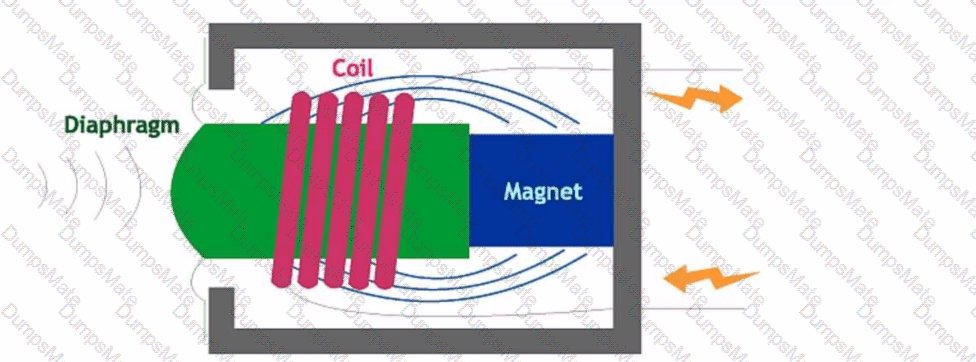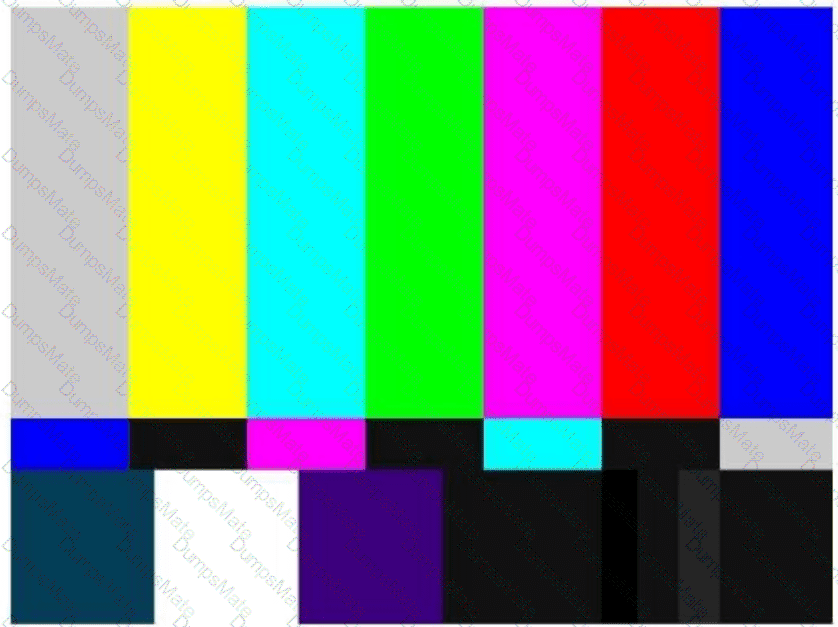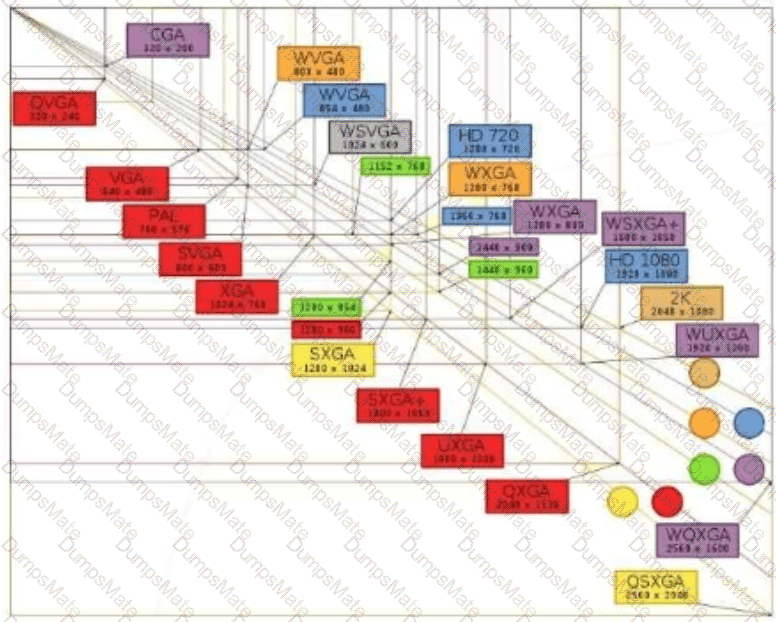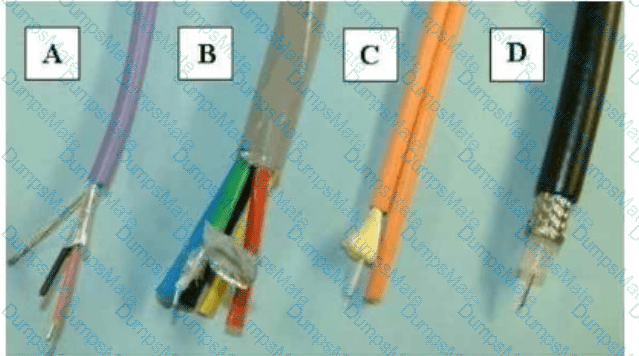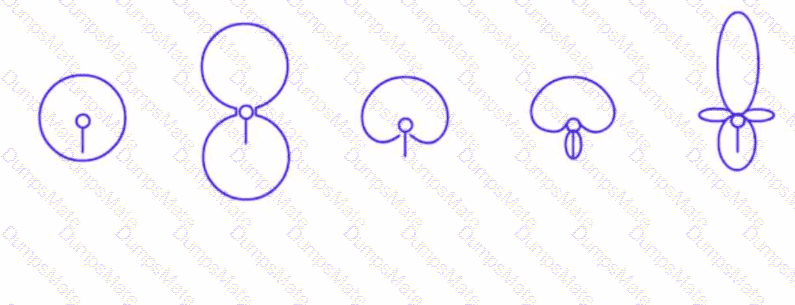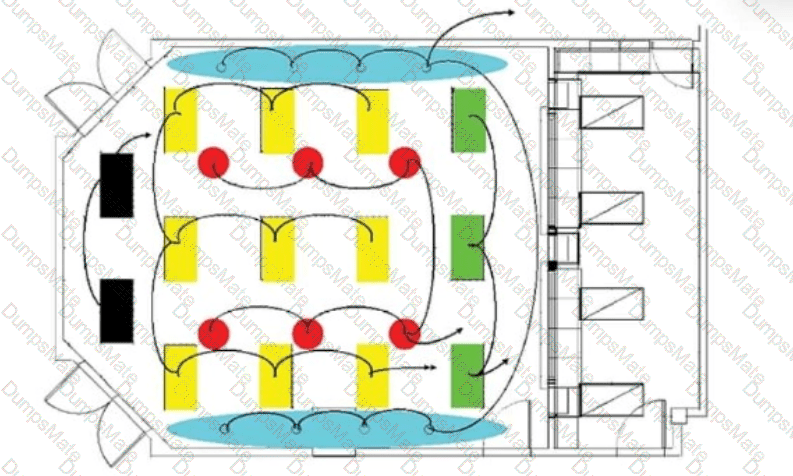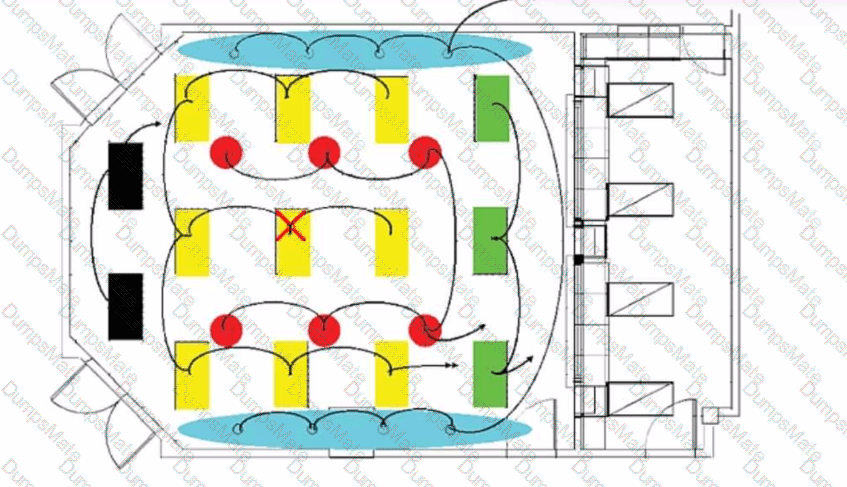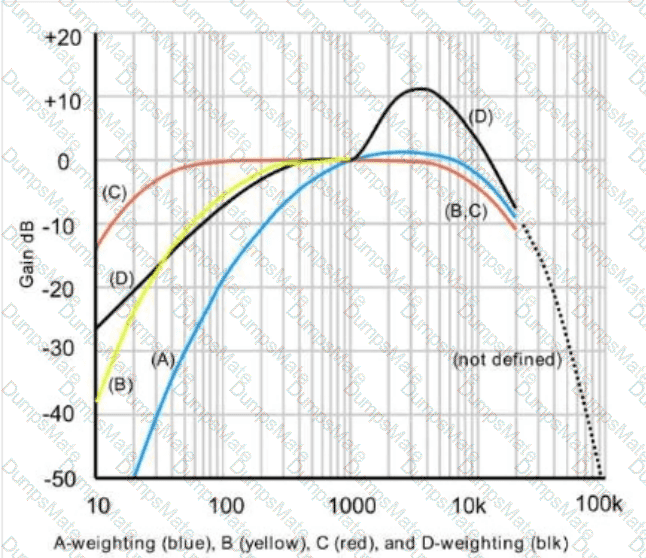In the diagram, lighting zones are typically defined by separate control paths or groups of lights that are independently operated. Each uniquely grouped set of lights shown with a distinct wiring loop or pathway represents one lighting zone.
Upon analysis:
There are 6 clearly delineated lighting zones, each represented by a different control path (black arrows or loops) connecting light fixtures.
These zones correspond to:
Front center lighting area (yellow boxes)
Rear center lighting area (yellow boxes)
Left aisle lighting (green)
Right aisle lighting (green)
Front curved lighting (blue)
Rear curved lighting (blue)
Each of these zones serves a different function (e.g., audience areas, presentation zones, ambient or pathway lighting), which aligns with typical AV environment lighting zoning strategy.
According to the AVIXA CTS Exam Guide, 5th Edition – Chapter 8: Lighting and Control, it states:
"Lighting zones are separated based on control, purpose, and placement. Zoning enables flexible lighting control schemes for AV spaces such as classrooms, conference rooms, and auditoriums."
— AVIXA CTS Exam Guide, Chapter 8, p. 173–175
???? References:
AVIXA CTS Exam Guide, 5th Edition – Chapter 8: Lighting Systems & Control Zones
AV Design Best Practices: ANSI/AVIXA D401.01:2019 – AV Systems Performance Verification
AVIXA Body of Knowledge: Environmental Considerations in AV Design



